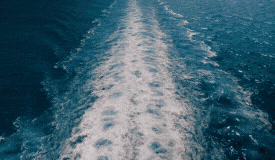Today Tuesday February 2, 2010 "World Wetlands day," marks 39 years since the adoption of the Ramsar Convention/Convention on Wetlands in the Iranian City of Ramsar in 1971. "The Convention's mission is the conservation and wise use of all wetlands through local, regional, and national actions and international cooperation, as a contribution towards achieving sustainable development throughout the world." (Ramsar COP8, 2002). Presently there are over 150 signatories to the convention with more than 1800 wetland sites designated for inclusion in the Ramsar List of Wetlands of International Significance.
Sint Maarten is party to the Ramsar Convention as part of the Netherlands Antilles and the Kingdom of the Netherlands. The Netherlands Antilles has so far designated five so-called "Ramsar sites" all on the island of Bonaire (Salina Slagbaai, Goto, Pekelmeer, Lac, and Klein Bonaire). The Convention however encourages parties to add more wetlands to already designated Ramsar sites.
This year's World wetlands day has particular significance for St. Maarten as the neglect and under appreciation of our wetlands, natural and cultural heritage has never been more apparent than it is now with the ongoing filling-in of the Great Salt Pond for the Ring road project.
This systematic filling in and destruction of ponds and the Simpson Bay Lagoon has evidently become the norm rather than an exception despite EPIC and St. Maarten Pride Foundation's numerous calls for the protection of St. Maarten's few remaining wetlands.
In 1950 Dutch Sint Maarten boasted at least 19 ponds (all documented in maps available at the Cadastre's office); by 1995 this had been reduced to 10 ponds and today 15 years later less than 5 remain intact. A list of ponds that have been destroyed in the past decade alone includes the two ponds at Cup coy (completely destroyed in February 2005 for the Porto Cup coy project), the pond at Guano Bay (completely destroyed in March 2005) and Dawn Beach pond (completely destroyed in May 2005 by Columbia Sussex for the Westin hotel).
Dutch Sint Maarten's Ponds as registered at the Cadastre's Office Current Status
1. Atwill Pond (Now Chesterfields restaurant) Destroyed
2. Point Blanche Pond Destroyed
3. Jumble Pond (Now area of Sell Madura) Destroyed
4. Old Bloomindales (elemental) Pond (area of Sundial School) Destroyed
5. Little Bay Pond/ fort Adam or Lay bay Pond (now area of Dive Hotel) Destroyed
6. Fresh Pond Polluted, under threat, still of high environmental/ ecological significance
7. Great Salt Pond Polluted, under threat, still of high environmental/ ecological significance
8. Phoebe Pond (Elide Road) Destroyed
9. Guano Bay Pond Destroyed (March 2005)
10. Red Pond Under threat, still of high environmental/ ecological significance
11. Dawn Beach Pond/Ravine Rouge Destroyed by Columbia Sussex for Westin hotel (May 2005)
12. Oyster Pond Under threat, still of high environmental/ ecological significance
13. Little Bay/ Blair Pond (Welgelegen Pond ) under threat, still of high environmental/ ecological significance
14. St. Johns Pond Destroyed (1994)
15. Cay Bay Pond (behind cay bay cemetery) Destroyed
16. Flamingo Pond Destroyed for airport expansion (1998)
17. Mullet Bay Pond Under threat from redevelopment of Mullet Bay area, still of high environmental/ ecological significance
18. Maho Pond Destroyed
19. Cupecoy Pond 1 Destroyed (February 2005)
20. Cupecoy pond 2 Destroyed (February 2005)
Sint Maarten's ponds have been recommended for protection in reports such as The Ponds of Sint-Maarten, (Ecovision, 1996), the Carrying Capacity Study, the Tourism Master plan and many other reports and studies which concluded that the ponds are of ecological and environmental importance. Some of the island's remaining ponds, especially Little Bay Pond and Mullet Pond, may therefore have a good chance of meeting the criteria of being wetlands of (inter)national significance and could potentially be designated as Ramsar sites.
EPIC and St. Maarten Pride Foundation therefore reiterate their demand that government develops, implements and enforces Zoning Plans and Wetland Protection legislation to protect Sint Maarten's few remaining wetlands. The Foundations also renew repeated calls for the implementation of the already compiled Marine Park Ordinance which has been awaiting Government's approval since the document was completed in 2005.
EPIC, St. Maarten Pride Foundation, Nature Foundation and the Seaside Nature Park will be planting several species of plants found along St. Maarten's coast at the Park's grounds in Cay Bay in recognition of the importance of St. Maarten's wetlands and coastal zones during the course of this week. Date and time will be announced in a subsequent press release.












